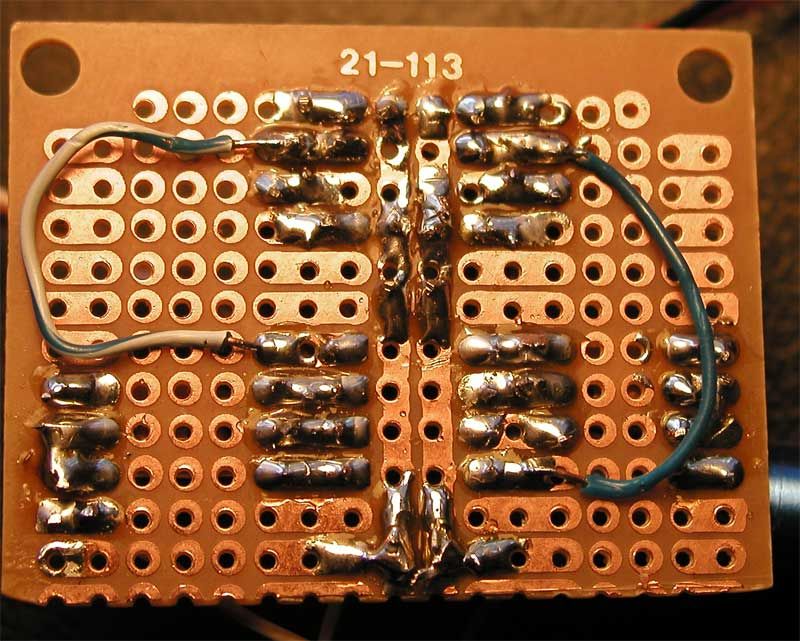Okkler
New Head-Fier
- Joined
- Aug 11, 2004
- Posts
- 44
- Likes
- 0
Ah, Memories.
My first cmoy, which I built not long ago, looked like this. The soldering job was so sloppy and I had so many cold joints that I had to scrap the project and start over with a new board. It took me about 3 tries to make a good amp. I had the exact same problem as you, with uneven voltages between V+ and V-.
What I do now to make sure everything will work is test all my joints with a DMM right after they are done. If you read more than .10 ohms on your meter, its probably cold and needs some work. I also check between pads that shouldnt be connected for solder bridges and clean them up with some desoldering braid, which is really great stuff. Clean up all solder bridges between all pads. There should only be a solder connection between holes on like pads so the jumpers can work.
Looks like youre burning up the board a bit too, and I *think* you may have the switch wired wrongly.
I recomend scrapping the project and starting over on a fresh board and if you can, use new caps. The project isnt a failure if you learn from the experience. If you test everything all the time, take care and make a point to move slowly, I would say the chances of making a working amp approach 100 percent

Hope this helps
My first cmoy, which I built not long ago, looked like this. The soldering job was so sloppy and I had so many cold joints that I had to scrap the project and start over with a new board. It took me about 3 tries to make a good amp. I had the exact same problem as you, with uneven voltages between V+ and V-.
What I do now to make sure everything will work is test all my joints with a DMM right after they are done. If you read more than .10 ohms on your meter, its probably cold and needs some work. I also check between pads that shouldnt be connected for solder bridges and clean them up with some desoldering braid, which is really great stuff. Clean up all solder bridges between all pads. There should only be a solder connection between holes on like pads so the jumpers can work.
Looks like youre burning up the board a bit too, and I *think* you may have the switch wired wrongly.
I recomend scrapping the project and starting over on a fresh board and if you can, use new caps. The project isnt a failure if you learn from the experience. If you test everything all the time, take care and make a point to move slowly, I would say the chances of making a working amp approach 100 percent

Hope this helps


